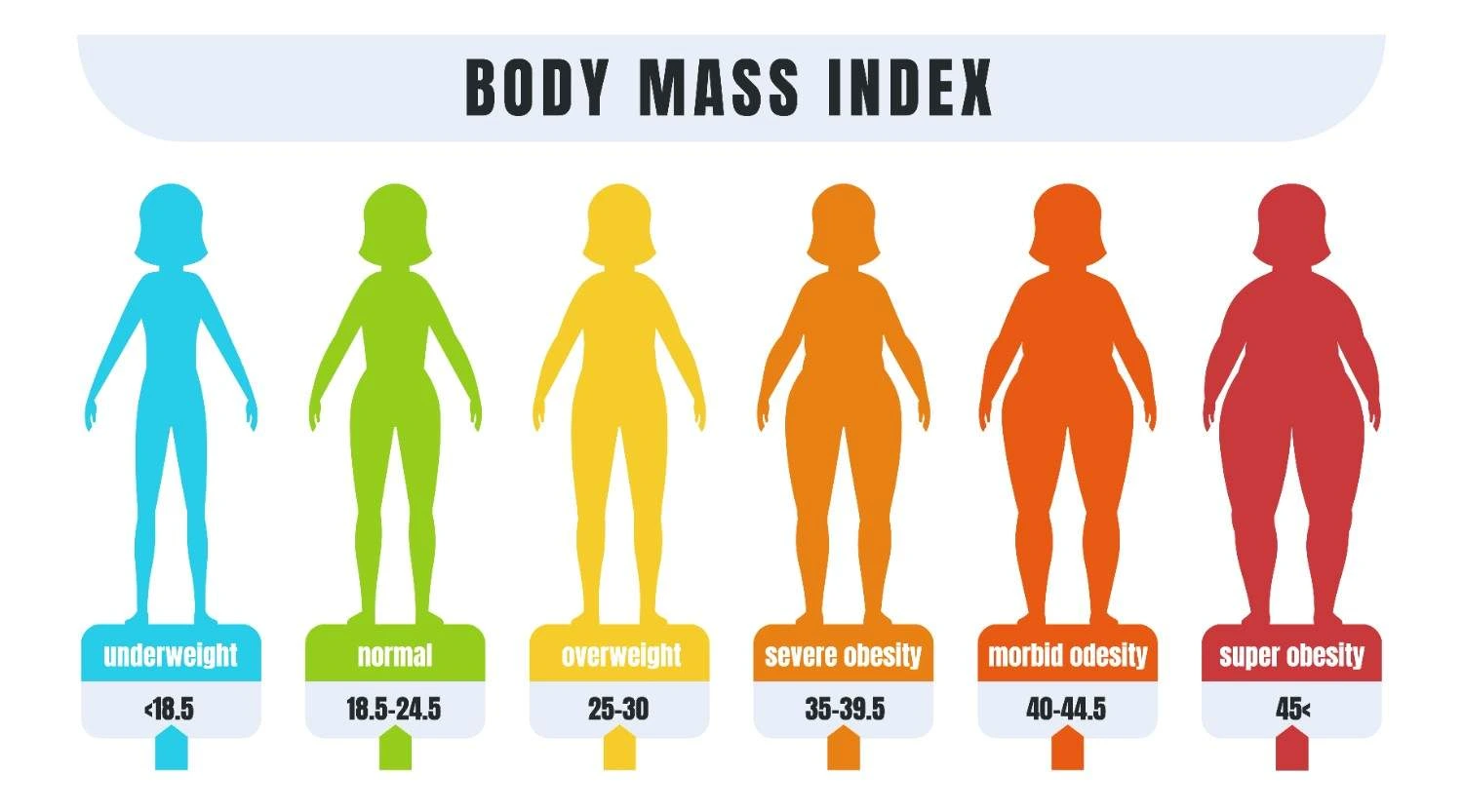Understanding Obesity: ICD-10 Codes, Classes, and Health Impacts – How Weight Loss Services Can Help

By: Just Lose Weight
Medically reviewed by: Dr. Olasupo Odunsi
Obesity has reached epidemic levels in the United States, affecting daily life, energy, and long-term health. If you’ve looked up ICD 10 code obesity, obesity class 3, obesity class, obesity code, or obesity boards, you’re likely dealing with a diagnosis, insurance paperwork, or researching treatment options. You may also wonder: can obesity cause diabetes? Can obesity cause hair loss? Can obesity cause shortness of breath? These are real concerns tied to a condition that impacts over 42% of American adults. This guide explains the medical codes, classification system, and serious health risks — while showing exactly how targeted weight loss services in Maryland can reverse the damage and restore your quality of life.
What Is Obesity and How Is It Classified?
Obesity is officially defined as a Body Mass Index (BMI) of 30 or higher. BMI is calculated by dividing your weight in kilograms by your height in meters squared — or using the simpler U.S. formula: (weight in pounds × 703) ÷ (height in inches)². While BMI isn’t perfect (it doesn’t distinguish between muscle and fat), it remains the standard screening tool used by doctors nationwide.
The ICD 10 code obesity system — part of the International Classification of Diseases, 10th Revision — helps healthcare providers document, bill, and track this condition. The main category is E66: Overweight and obesity. Specific codes include:
- E66.01: Morbid obesity due to excess calories (often used for severe cases)
- E66.09: Other obesity due to excess calories
- E66.813: Obesity class 3 (BMI 40.0 and above), a precise code updated in recent years
- E66.3: Overweight (BMI 25.0–29.9), a warning sign before full obesity develops
Additional Z68 codes specify exact BMI ranges, such as Z68.41 for 40.0–44.9. These obesity codes are essential for insurance approval of treatments like prescription injections or medically supervised programs.
Obesity is further divided into three classes based on BMI severity:
- Obesity class 1: BMI 30.0–34.9 — moderate risk
- Obesity class 2: BMI 35.0–39.9 — high risk
- Obesity class 3: BMI 40.0 and above — very high risk, often called “severe” or “morbid” obesity
Obesity class 3 affects nearly 1 in 10 U.S. adults and carries the greatest danger for life-threatening complications. The term obesity boards refers to the American Board of Obesity Medicine (ABOM), which certifies physicians who complete specialized training and pass a national exam. Board-certified obesity specialists follow evidence-based protocols — the gold standard in long-term weight management.
The Real Health Risks: What Obesity Can Trigger

Obesity doesn’t just change how you look — it changes how your body functions. Let’s answer the big questions.
Can Obesity Cause Diabetes?
Yes — and it’s the primary driver. Excess body fat, especially around the midsection, causes insulin resistance. Your cells stop responding to insulin, forcing your pancreas to work overtime. Eventually, it can’t keep up, and blood sugar rises — leading to type 2 diabetes. People with obesity are up to 80 times more likely to develop this condition than those at a healthy weight. Over 37 million Americans have diabetes, and 90–95% of cases are type 2, directly linked to weight.
The good news? Losing just 5–10% of body weight can restore insulin sensitivity and cut diabetes risk in half. Medications originally designed for diabetes are now revolutionizing obesity treatment.
Can Obesity Cause Hair Loss?
It can — and the connection is stronger than most realize. Chronic inflammation from excess fat damages hair follicle stem cells, pushing them into a “resting” phase instead of growing new strands. High insulin levels trigger androgen overproduction, shrinking follicles and causing pattern baldness in both men and women. Poor nutrition common in obesity — low iron, zinc, or protein — further weakens hair.
Studies show that sustained weight loss can halt this process and even promote regrowth. Reducing inflammation and balancing hormones are key.
Can Obesity Cause Shortness of Breath?
Absolutely. Extra weight presses on the chest wall and diaphragm, reducing lung capacity by up to 30%. Breathing becomes shallow and inefficient. In obesity class 3, this can lead to Obesity Hypoventilation Syndrome (OHS), where the body retains carbon dioxide, causing daytime drowsiness and severe fatigue. Sleep apnea often coexists, worsening oxygen levels.
Even mild activity — climbing stairs or walking — can leave you winded. But here’s the hope: every 10 pounds lost improves lung function and eases breathing effort.
How Weight Loss Services Reverse These Risks

The solution isn’t just “eat less, move more.” Modern medical weight loss combines science, medication, and support for lasting results. Here’s how specific services address obesity and its complications:
Mounjaro (Tirzepatide) Injections and Wegovy (Semaglutide) Injections are FDA-approved for both obesity and type 2 diabetes. These GLP-1 receptor agonists mimic natural gut hormones to reduce hunger, slow digestion, and improve insulin response. Clinical trials show average weight loss of 15–22% in the first year — enough to reverse prediabetes and reduce shortness of breath.
B12 Injections for Weight Loss boost energy and metabolism, especially if deficiency contributes to fatigue or hair thinning. Lipotropic Shots contain fat-burning compounds like methionine, inositol, and choline to enhance liver function and fat breakdown.
Appetite Suppressants and Bella Plus Weight Loss Capsules offer safe, prescription-grade hunger control without stimulants. The HCG Diet in Maryland uses hormone support to target stubborn fat while preserving muscle.
For skin and body contouring, LPG Key Module Cellulite Reduction uses mechanical massage to improve circulation and smooth dimpling. Vanquish Me™ Body Sculpting delivers radiofrequency heat to melt fat non-invasively — ideal for love handles or belly fat.
Natural Hormone Therapy corrects imbalances that fuel weight gain, especially during menopause or andropause. The Anti-Aging Plan combines nutrition, peptides, and lifestyle coaching to restore vitality.
Fat-Burning Injections, Mega Injections, and Weight Loss Injections accelerate fat loss when diet and exercise plateau. New Wave Weight Loss integrates behavioral therapy for mindset shifts that prevent rebound gain.
Finally, Body Scan technology measures exact fat percentage, muscle mass, and visceral fat — creating a data-driven roadmap for progress.
Take Control Today
Whether your chart says ICD 10 code obesity E66.01, obesity class 3, or simply “overweight,” the path forward is clear. Can obesity cause diabetes? Yes — but it can be stopped. Can obesity cause hair loss or shortness of breath? Yes — but both improve with weight loss.
Our Maryland clinic offers every tool listed above under board-certified guidance. From semaglutide and tirzepatide to body sculpting and hormone balancing, your personalized plan starts with a simple consultation.
Don’t wait for the next symptom. Book your appointment today and turn the page on obesity — for good.
Takoma Park MD: 📞 (703) 543–9490📍 7513 New Hampshire Avenue, Takoma Park MD 20912
Rockville, MD: 📞(703) 543–9490 📍 12250 Rockville Pike, #208 Rockville, MD 20852
Fairfax, VA: 📞(703) 543–9490 📍 8505 Arlington Blvd #270 Fairfax, VA 2203
